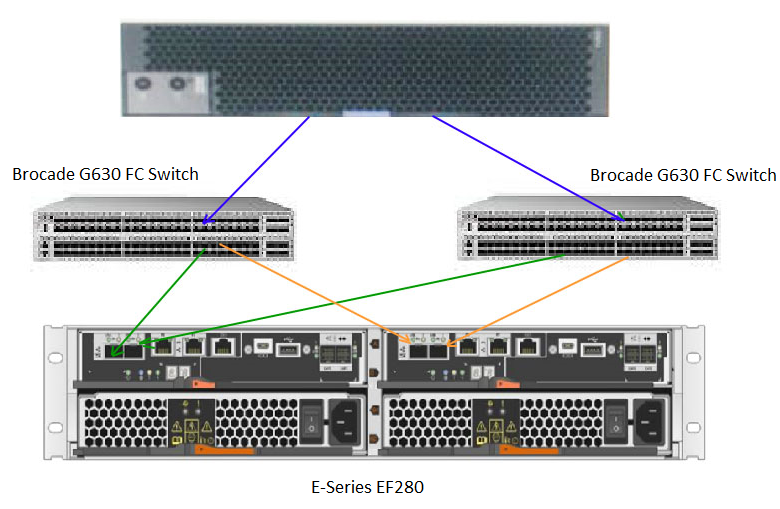At ValidExamDumps, we consistently monitor updates to the NetApp NS0-516 exam questions by NetApp. Whenever our team identifies changes in the exam questions,exam objectives, exam focus areas or in exam requirements, We immediately update our exam questions for both PDF and online practice exams. This commitment ensures our customers always have access to the most current and accurate questions. By preparing with these actual questions, our customers can successfully pass the NetApp Certified Implementation Engineer - SAN Specialist, E-Series exam on their first attempt without needing additional materials or study guides.
Other certification materials providers often include outdated or removed questions by NetApp in their NetApp NS0-516 exam. These outdated questions lead to customers failing their NetApp Certified Implementation Engineer - SAN Specialist, E-Series exam. In contrast, we ensure our questions bank includes only precise and up-to-date questions, guaranteeing their presence in your actual exam. Our main priority is your success in the NetApp NS0-516 exam, not profiting from selling obsolete exam questions in PDF or Online Practice Test.
Which command on a NetApp storage controller will display the average latency time on a per LUN basis every five seconds?
Purpose: To display the average latency time on a per LUN basis.
Command: lun stats -i 5
Usage: Provides performance statistics, including latency, for each LUN at specified intervals (every 5 seconds in this case).
Reference: NetApp Data ONTAP Command Reference Guide.
When working on a customer's E-Series system to configure LDAP, you realize that you need to complete a Certificate Signing Request to receive a certificate.
In this scenario, when entering the information for the CSR, what information do you need from the controllers themselves? (Choose three.)
When completing a Certificate Signing Request (CSR) for an E-Series system, you will need:
The controller's geographical location: This is typically the city or locality and the country where the controller is located.
The controller's common name: This is usually the fully qualified domain name (FQDN) of the controller.
The controller's alternate names: These may include additional domain names or IP addresses that the certificate should also cover.
NetApp E-Series SANtricity System Manager Documentation on Security and LDAP Configuration.
A customer has an E5760 array with a 30-drive Dynamic Disk Pool (DDP) that uses 800 GB SSD drives. The customer needs to expand the pool by one drive but has only a 1.6 TB SSD drive available.
In this scenario, what happens when the customer attempts to add the 1.6 TB drive to the existing pool?
The pool is expanded by 800 GB
When a larger drive (1.6 TB) is added to a Dynamic Disk Pool (DDP) that consists of smaller drives (800 GB), the pool expands only by the size of the existing drives in the pool. Hence, in this scenario, the pool would be expanded by 800 GB.
Click the Exhibit button.

A customer's host is running a Red Hat Enterprise Linux 7.6 server with dm-mp configured for ALUA and is connected to a single volume on the EF280 system that is shown in the exhibit.
In this scenario, how many active/optimized paths are available to the volume?
Based on the exhibit provided and the scenario where a Red Hat Enterprise Linux 7.6 server is configured with Device Mapper Multipathing (dm-mp) for Asymmetric Logical Unit Access (ALUA) and connected to a single volume on the EF280 system, there are 4 active/optimized paths available to the volume.
In ALUA configurations, paths are classified as active/optimized or active/non-optimized. Each controller on the EF280 system will have two active/optimized paths to the volume, leading to a total of four such paths. This setup ensures high availability and optimal performance for data access.
NetApp E-Series and EF-Series Multipathing Guide for Linux
SANtricity System Manager User Guide
=========================
A customer wants to manage an E-Series system over a secure connection between the system and a server. During implementation, you are asked to fulfill this installation requirement.
In this scenario, which three actions are required to complete this task? (Choose three.)
Secure Connection Requirement: To manage the E-Series system over a secure connection, certain steps need to be taken to ensure encrypted communications.
Disabling Legacy Management Interface: This step ensures that only secure management interfaces are used, preventing the use of less secure legacy protocols.
Certificate Signing Request (CSR): Completing the CSR on the system is necessary to generate a public/private key pair. This CSR can then be submitted to a certificate authority (CA) to obtain a signed certificate.
Importing CA Signed Certificates: Once the CA has signed the certificate, it must be imported into the E-Series system. This signed certificate ensures that the communication between the server and the system is encrypted and trusted.
NetApp E-Series SANtricity System Manager documentation on secure management
NetApp Implementation Engineer - SAN Specialist - E-Series manuals